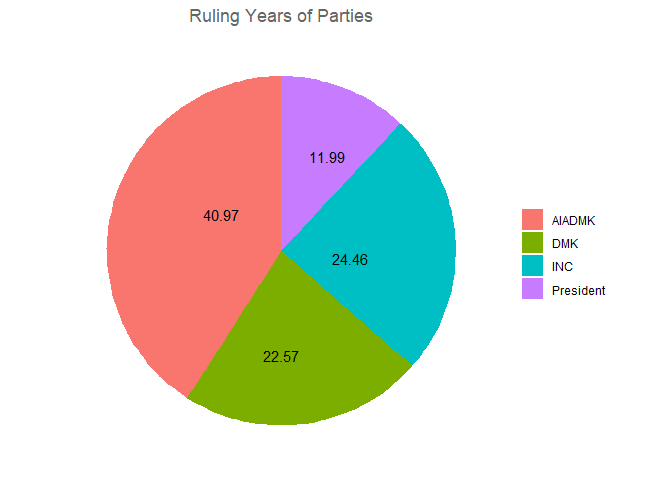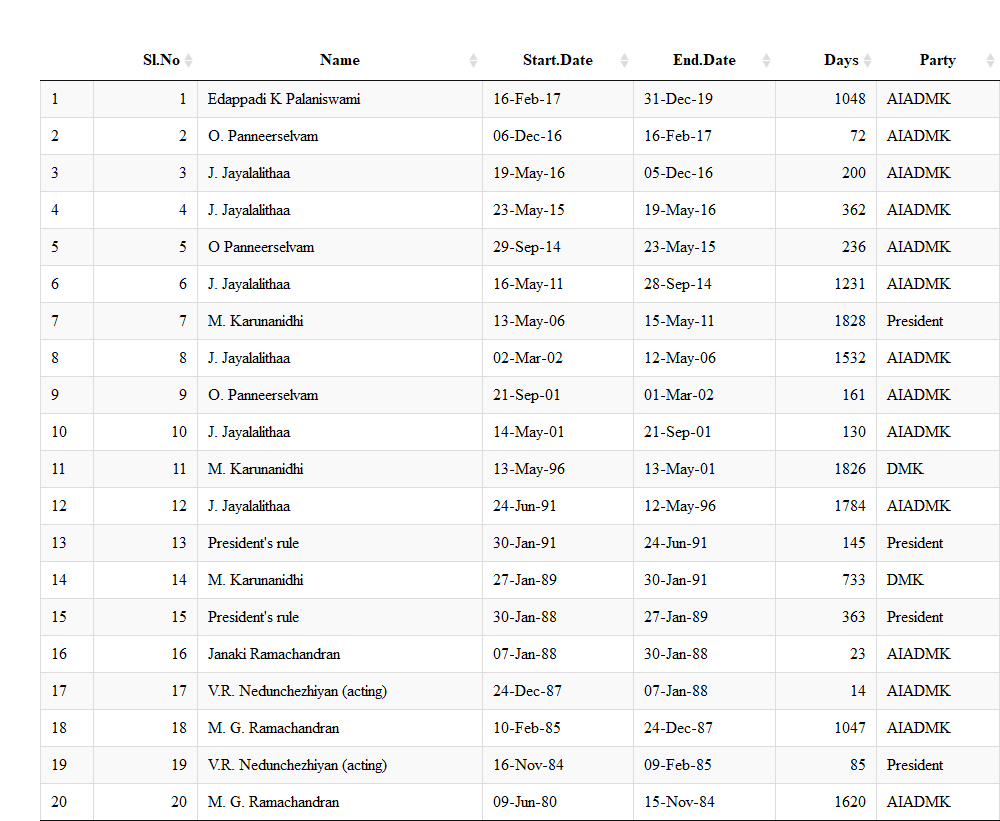Over View of Tamil Nadu Legislative election results - Ruling years of various parties and number of legislative constituency details
by theDataTalks . 31 Dec 2019Parties ruled:
1967 is the end of national parties in the state of Tamil Nadu (TN) and
the state party Dravida Munnetra Kazhagam (DMK) won the election and
started ruling TN. From 1967, national parties never get a majority
chance to rule the state. DMK or AIADMK (All India Anna Dravida
Munnetra Kazhagam) are the two major parties ruling Tamil Nadu. The
pie chart shows the number of years ruled by each party.
INC ruling periods: 1952-1967
DMK ruling periods: 1967-1977 & 1989-1991 & 1996-2001 & 2006-2011
AIADMK ruling periods: 1977-1989 & 1991-1996 & 2001-2006 & 2011-2019

Legislative Constituency (LC):
In 1953, the Madras state was renamed as “Tamil Nadu” and some parts of
Madras state were separated. The details are:
- Coastal Andhra & Rayalaseema to form the state of
Andhra Pradesh - South Canara & Bellary district to form Mysore state
- Malabar district to form Kerala
The state of Madras had 309 assembly constituencies during the 1951
election. Out of which 243 were single-member constituencies & 66 were
dual-member constituencies. In the 1957 election, the state of TamilNadu
had 167 assembly constituencies in which 129 were single member
constituencies and 38 dual member constituencies. Dual member
constituency – A single constituency will be represented by two
representatives and currently this system is practiced nowhere in the
world. India had dual member constituency until 1961 and abolition of
dual member constituency act was introduced in 1961. From 1967 the state
has 234 assembly constituencies until 2019.
Tamil Nadu chief ministers list:
The below table shows the list of chief ministers of Tamil Nadu with
starting date, end date, number of days in the post, and party name.

The data file in *.CSV format can be downloaded from Chief ministers of Tamil Nadu